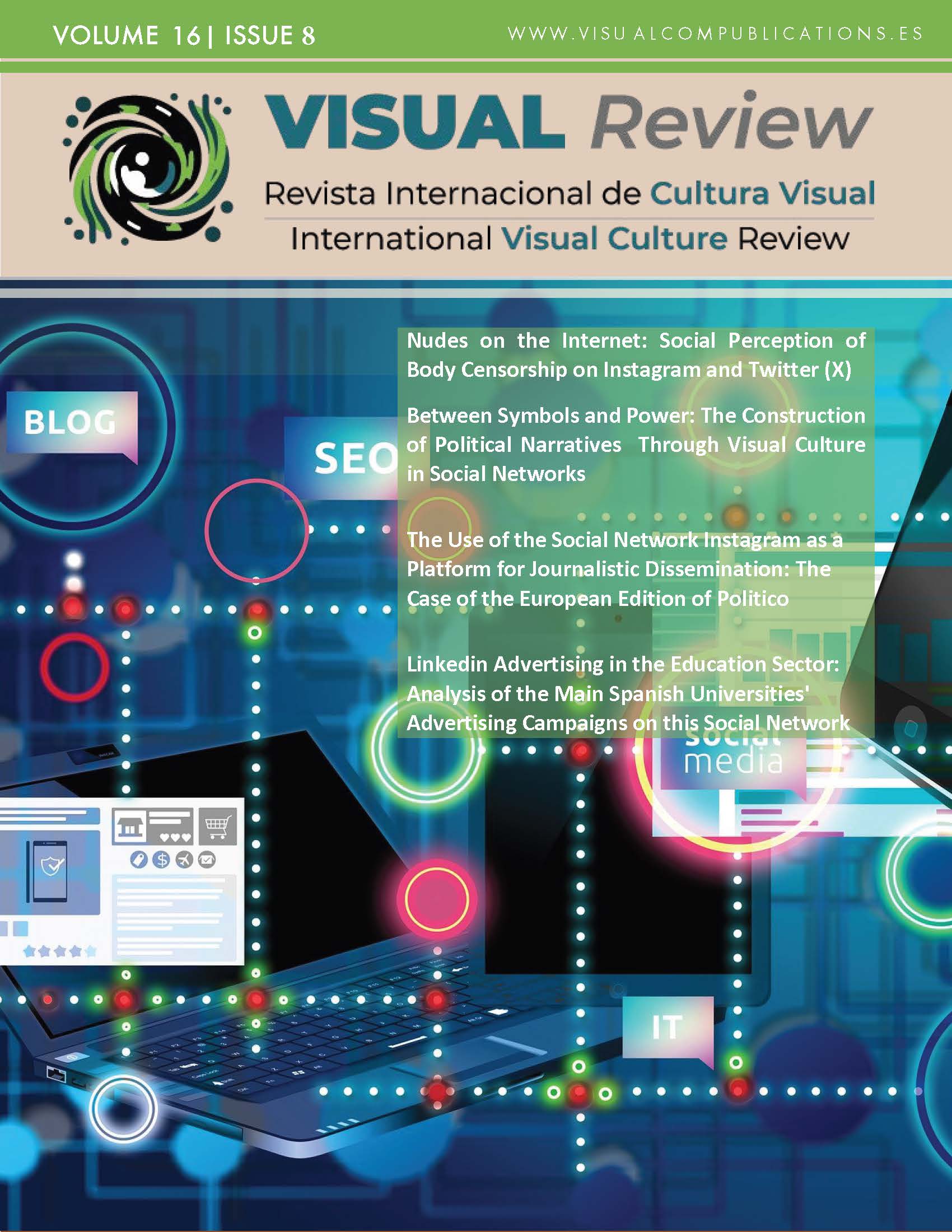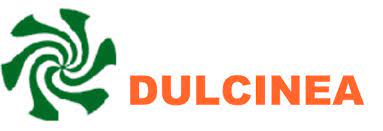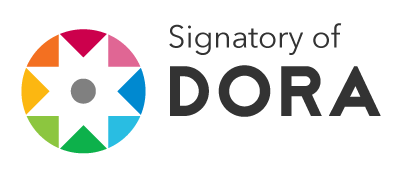Spanish Universities on TikTok
The Effectiveness of Trends and Challenges in Generating Engagement
DOI:
https://doi.org/10.62161/revvisual.v16.5362Keywords:
TikTok, Engagement, University, Viral trends, Digital marketingAbstract
The article analyzes the use of TikTok by Spanish universities as an institutional communication strategy, focusing on their participation in viral trends and their effectiveness in generating engagement. Through a content analysis of the most popular videos, the most effective strategies were evaluated. The results show that short videos aligned with viral trends achieve greater interaction than institutional or promotional content. In addition, an uneven adoption of the platform is highlighted, suggesting a potential for improvement in the use of TikTok by universities to maximize its impact.
Downloads
Global Statistics ℹ️
|
816
Views
|
610
Downloads
|
|
1426
Total
|
|
References
Abdul, H. A., & Mohd, S. Z. (2023). More than just engaging? TikTok as an efective educational tool. International Journal of Education, Psychology and Counseling, 8(52), 133-142. https://doi.org/10.35631/IJEPC.852011 DOI: https://doi.org/10.35631/IJEPC.852011
Alcolea, M., & Núñez, V. (2021, febrero 2). Incursión de la red social Tiktok en los departamentos de comunicación corporativa de las 35 universidades privadas españolas. Comparativa con la red social Instagram. Congreso Estudiantes Doctorado. Universidad Miguel Hernández.
Algesheimer, R., Dholakia, U. M., & Herrmann, A. (2005). The Social Influence of Brand Community: Evidence from European Car Clubs. Journal of Marketing, 69(3), 19-34. https://doi.org/10.1509/jmkg.69.3.19.66363 DOI: https://doi.org/10.1509/jmkg.69.3.19.66363
Brodie, R. J., Ilic, A., Juric, B., & Hollebeek, L. (2013). Consumer engagement in a virtual brand community: An exploratory analysis. Journal of Business Research, 66(1), 105-114. https://doi.org/10.1016/j.jbusres.2011.07.029 DOI: https://doi.org/10.1016/j.jbusres.2011.07.029
Business of Apps. (s. f.). TikTok Revenue and Usage Statistics (2024). Business of Apps. Recuperado 12 de septiembre de 2024, de https://www.businessofapps.com/data/tik-tok-statistics/
Cheng, Z., & Li, Y. (2024). Like, Comment, and Share on TikTok: Exploring the Effect of Sentiment and Second-Person View on the User Engagement with TikTok News Videos. Social Science Computer Review, 42(1), 201-223. https://doi.org/10.1177/08944393231178603 DOI: https://doi.org/10.1177/08944393231178603
Datareportal. (2024, enero 31). Digital 2024: Global Overview Report. DataReportal – Global Digital Insights. https://datareportal.com/reports/digital-2024-global-overview-report
Divon, T., & Ebbrecht-Hartmann, T. (2022). Permorming death and trauma? Participatory mem(e)ory and the holocaust in tiktok #Povchallenges. AoIR Selected Papers of Internet Research. https://doi.org/10.5210/spir.v2022i0.12995 DOI: https://doi.org/10.5210/spir.v2022i0.12995
Elo, S., & Kyngäs, H. (2008). The qualitative content analysis process. Journal of Advanced Nursing, 62(1), 107-115. https://doi.org/10.1111/j.1365-2648.2007.04569.x DOI: https://doi.org/10.1111/j.1365-2648.2007.04569.x
Glaser, B. G., & Strauss, A. L. (1967). The discovery of grounded theory: strategies for qualitative research. Aldine de Gruyter. DOI: https://doi.org/10.1097/00006199-196807000-00014
Guarda, T., Augusto, M. F., Victor, J. A., Mazón, L. M., Lopes, I., & Oliveira, P. (2021). The Impact of TikTok on Digital Marketing. Marketing and Smart Technologies, 35-44. https://doi.org/10.1007/978-981-33-4183-8_4 DOI: https://doi.org/10.1007/978-981-33-4183-8_4
Hall, H., & Peszko, K. (2016). Social media as a relationship marketing tool of modern university. Marketing i Zarządzanie, 46, 41-56. https://doi.org/10.18276/miz.2016.46-05 DOI: https://doi.org/10.18276/miz.2016.46-05
Hsieh, H.-F., & Shannon, S. E. (2005). Three Approaches to Qualitative Content Analysis. Qualitative Health Research, 15(9), 1277-1288. https://doi.org/10.1177/1049732305276687 DOI: https://doi.org/10.1177/1049732305276687
Jain, R., & Rao, M. (2024). A Bibliometric Analysis of the Impact of Digital Marketing in Higher Education. The International Journal of Interdisciplinary Organizational Studies, 19(1), 123-148. https://doi.org/10.18848/2324-7649/CGP/v19i01/123-148 DOI: https://doi.org/10.18848/2324-7649/CGP/v19i01/123-148
Jain, V., Mogaji, E., Sharma, H., & Babbili, A. S. (2022). A multi-stakeholder perspective of relationship marketing in higher education institutions. Journal of Marketing for Higher Education, 0(0), 1-19.https://doi.org/10.1080/08841241.2022.2034201 DOI: https://doi.org/10.1080/08841241.2022.2034201
Le, Q. H., Fuller, R., Hoang, T.-H., & Nguyen, N. (2023). Branding in higher education: A bibliometric analysis and research agenda. Journal of Marketing for Higher Education, 0(0), 1-24. https://doi.org/10.1080/08841241.2023.2289020 DOI: https://doi.org/10.1080/08841241.2023.2289020
Lisa, B., Firdaus, R., & Setijowati, A. (2023). The Influence of POV Trend as a Branding Image Content Creator on TikTok. https://doi.org/10.5281/ZENODO.8340763
Marías, J. (1965). La estructura social. Teoría y método. Sociedad de Estudios y Publicaciones.
Marías, J. (2018). Breve tratado de la ilusión. Alianza.
Marwick, A. (2013). Memes. Contexts, 12(4), 12-13. https://doi.org/10.1177/1536504213511210 DOI: https://doi.org/10.1177/1536504213511210
Ministerio de Ciencia, Innovación y Universidades. (s. f.). Listado de Universidades. Recuperado 2 de septiembre de 2024, de https://www.universidades.gob.es/listado-de-universidades/
Naheen, F., & Elsharnouby, T. H. (2024). You are what you communicate: On the relationships among university brand personality, identification, student participation, and citizenship behaviour. Journal of Marketing for Higher Education, 34(1), 368-389. https://doi.org/ 10.1080/08841241.2021.1992814 DOI: https://doi.org/10.1080/08841241.2021.1992814
Pérez, G., Aguilar, A., & Guillermo, M. E. (2014). El meme en internet: Usos sociales, reinterpretación y significados, a partir de Harlem Shake. Argumentos, 27(75), 79-100.
Peruta, A., & Shields, A. B. (2017). Social media in higher education: Understanding how colleges and universities use Facebook. Journal of Marketing for Higher Education, 27(1), 131-143. https://doi.org/10.1080/08841241.2016.1212451 DOI: https://doi.org/10.1080/08841241.2016.1212451
Princiotti, N. (2023, diciembre 19). In 2023, We Were All in Our Eras Era. The Ringer. https://www.theringer.com/music/2023/12/19/24006805/in-my-era-taylor-swift-eras-tour-2023
Rutter, R., Roper, S., & Lettice, F. (2016). Social media interaction, the university brand and recruitment performance. Journal of Business Research, 69(8), 3096-3104. https://doi.org/10.1016/j.jbusres.2016.01.025 DOI: https://doi.org/10.1016/j.jbusres.2016.01.025
Sampieri, R., Fernández Collado, C., Baptista Lucio, P., Méndez Valencia, S., & Mendoza Torres, C. P. (2014). Metodología de la investigación. McGrawHill.
Schau, H. J., Muñiz, A. M., & Arnould, E. J. (2009). How Brand Community Practices Create Value. Journal of Marketing, 73(5), 30-51. https://doi.org/10.1509/jmkg.73.5.30 DOI: https://doi.org/10.1509/jmkg.73.5.30
Sidorenko, P. (2022). Marketing y publicidad en TikTok: El éxito de la fórmula del «anti-marketing» y las narrativas no convencionales. En Manifiesto de la Publicidad. La Publicidad en tránsito (pp. 109-120). Sindéresis.
Sidorenko, P., Cabrera, M., & Torrente-Martínez, M.-J. (2024). ¿Cómo comunican las universidades en Tik Tok? VISUAL REVIEW. International Visual Culture Review / Revista Internacional de Cultura Visual, 16(4), Article 4. https://doi.org/10.62161/revvisual.v16.5275 DOI: https://doi.org/10.62161/revvisual.v16.5275
Sidorenko, P., & Herranz, J. M. (2022). Mundo TikTok: Información concisa, efímera y muy visual. En Narrativa digitales para la comunicación institucional y personal (pp. 47-55). infociudadana y Konrad Adenauer Stiftung.
Sidorenko, P., Herranz, J. M., & Moya, A. S. (2021). Análisis de la comunicación de empresas europeas y norteamericanas en TikTok. aDResearch: Revista Internacional de Investigación en Comunicación, 25 (marzo), 106-123. DOI: https://doi.org/10.7263/adresic-025-06
Sörensen, I., Vogler, D., Fürst, S., & Schäfer, M. S. (2023). Platforms matter: Analyzing user engagement with social media content of Swiss higher education institutions. Journal of Marketing for Higher Education. https://www.tandfonline.com/doi/abs/10.1080/08841241.2023.2289009 DOI: https://doi.org/10.1080/08841241.2023.2289009
Su, Y., Baker, B. J., Doyle, J. P., & Yan, M. (2020). Fan Engagement in 15 Seconds: Athletes’ Relationship Marketing During a Pandemic via TikTok. https://doi.org/10.1123/ijsc.2020-0238 DOI: https://doi.org/10.1123/ijsc.2020-0238
Vizcaíno-Verdú, A. (2024). Descolonización de la música en TikTok: “¡Hagamos un dúo!” Revista Mediterránea de Comunicación, 15(1), Article 1. https://doi.org/10.14198/MEDCOM.24949 DOI: https://doi.org/10.14198/MEDCOM.24949
Zulli, D., & Zulli, D. J. (2020). Extending the Internet meme: Conceptualizing technological mimesis and imitation publics on the TikTok platform. New Media & Society, 24(8), 1872-1890. https://doi.org/10.1177/1461444820983603 DOI: https://doi.org/10.1177/1461444820983603
Downloads
Published
How to Cite
Issue
Section
License
Copyright (c) 2024 VISUAL REVIEW. International Visual Culture Review / Revista Internacional de Cultura Visual

This work is licensed under a Creative Commons Attribution-NoDerivatives 4.0 International License.
Those authors who publish in this journal accept the following terms:
-
Authors retain copyright.
-
Authors transfer to the journal the right of first publication. The journal also owns the publishing rights.
-
All published contents are governed by an Attribution-NoDerivatives 4.0 International License.
Access the informative version and legal text of the license. By virtue of this, third parties are allowed to use what is published as long as they mention the authorship of the work and the first publication in this journal. If you transform the material, you may not distribute the modified work. -
Authors may make other independent and additional contractual arrangements for non-exclusive distribution of the version of the article published in this journal (e.g., inclusion in an institutional repository or publication in a book) as long as they clearly indicate that the work was first published in this journal.
- Authors are allowed and recommended to publish their work on the Internet (for example on institutional and personal websites), following the publication of, and referencing the journal, as this could lead to constructive exchanges and a more extensive and quick circulation of published works (see The Effect of Open Access).













